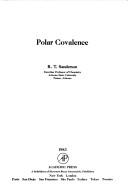| Listing 1 - 10 of 179 | << page >> |
Sort by
|
Book
ISBN: 3540591893 0387591893 Year: 1995 Publisher: Berlin : Springer,
Abstract | Keywords | Export | Availability | Bookmark
 Loading...
Loading...Choose an application
- Reference Manager
- EndNote
- RefWorks (Direct export to RefWorks)
Addition reactions. --- Overlap integral. --- Physical organic chemistry. --- Ring formation (Chemistry).
Book
Year: 2016 Publisher: Frontiers Media SA
Abstract | Keywords | Export | Availability | Bookmark
 Loading...
Loading...Choose an application
- Reference Manager
- EndNote
- RefWorks (Direct export to RefWorks)
The interplay between musical training and speech perception continues to intrigue researchers in the areas of language and music alike. Historically, language function has been attributed to brain regions localized predominately in left hemisphere, whereas music has been attributed to right hemisphere dominant regions. Recent studies demonstrating neural overlap for processing speech and music, and enhanced speech perception and production in musicians suggest that these regions may be inextricably intertwined. The extent of neural overlap between music and speech remains hotly debated, with surprisingly little empirical research exploring specific neural homo-logs and analogs. Moreover, despite recognition that shared processes likely exist throughout development and depend upon an individual’s acoustic experiences, even less research exists on how overlapping neural structures for music and language are affected by developmental trajectories. Nonetheless, the field is well poised to address key empirical questions, in part because of the recent development of new theories that address the neural and developmental interaction between music and language processing in conjunction with the broad availability of sophisticated tools for quantifying brain activity and dynamics. To understand the overlap of neural structures for language and music processing, research is needed to identify those specific functions of each that influence the other, with areas for enhanced perception of pitch and onset time having already been targeted. Research is also needed to identify the extent to which this overlap is developed in infancy or early childhood and the process by which it affects neural reorganization, plasticity, and trainability in adulthood. For this research topic, we would like to further explore the relationship between language and music in the brain from two perspectives: 1) understanding the nature of shared neural and cognitive processing for music and language and 2) understanding the developmental trajectory of these neural systems and how they are influenced by experience. We seek to gather technically diverse original research articles that present new empirical findings relevant to understanding: 1. When, in the brain, acoustic information becomes processed specifically as language or music. The shared and independent neural structures for processing music and language. 3. How acoustic experiences such as musical training influence overlap of neural structures for language and music. 4. How the overlap of processing regions changes over time due to experiences at any developmental stage.
development --- Language --- neural overlap --- neural plasticity --- Music --- Speech --- music processing --- musical training --- Auditory Perception --- Speech Processing
Book
Year: 2016 Publisher: Frontiers Media SA
Abstract | Keywords | Export | Availability | Bookmark
 Loading...
Loading...Choose an application
- Reference Manager
- EndNote
- RefWorks (Direct export to RefWorks)
The interplay between musical training and speech perception continues to intrigue researchers in the areas of language and music alike. Historically, language function has been attributed to brain regions localized predominately in left hemisphere, whereas music has been attributed to right hemisphere dominant regions. Recent studies demonstrating neural overlap for processing speech and music, and enhanced speech perception and production in musicians suggest that these regions may be inextricably intertwined. The extent of neural overlap between music and speech remains hotly debated, with surprisingly little empirical research exploring specific neural homo-logs and analogs. Moreover, despite recognition that shared processes likely exist throughout development and depend upon an individual’s acoustic experiences, even less research exists on how overlapping neural structures for music and language are affected by developmental trajectories. Nonetheless, the field is well poised to address key empirical questions, in part because of the recent development of new theories that address the neural and developmental interaction between music and language processing in conjunction with the broad availability of sophisticated tools for quantifying brain activity and dynamics. To understand the overlap of neural structures for language and music processing, research is needed to identify those specific functions of each that influence the other, with areas for enhanced perception of pitch and onset time having already been targeted. Research is also needed to identify the extent to which this overlap is developed in infancy or early childhood and the process by which it affects neural reorganization, plasticity, and trainability in adulthood. For this research topic, we would like to further explore the relationship between language and music in the brain from two perspectives: 1) understanding the nature of shared neural and cognitive processing for music and language and 2) understanding the developmental trajectory of these neural systems and how they are influenced by experience. We seek to gather technically diverse original research articles that present new empirical findings relevant to understanding: 1. When, in the brain, acoustic information becomes processed specifically as language or music. The shared and independent neural structures for processing music and language. 3. How acoustic experiences such as musical training influence overlap of neural structures for language and music. 4. How the overlap of processing regions changes over time due to experiences at any developmental stage.
development --- Language --- neural overlap --- neural plasticity --- Music --- Speech --- music processing --- musical training --- Auditory Perception --- Speech Processing
Book
Year: 2016 Publisher: Frontiers Media SA
Abstract | Keywords | Export | Availability | Bookmark
 Loading...
Loading...Choose an application
- Reference Manager
- EndNote
- RefWorks (Direct export to RefWorks)
The interplay between musical training and speech perception continues to intrigue researchers in the areas of language and music alike. Historically, language function has been attributed to brain regions localized predominately in left hemisphere, whereas music has been attributed to right hemisphere dominant regions. Recent studies demonstrating neural overlap for processing speech and music, and enhanced speech perception and production in musicians suggest that these regions may be inextricably intertwined. The extent of neural overlap between music and speech remains hotly debated, with surprisingly little empirical research exploring specific neural homo-logs and analogs. Moreover, despite recognition that shared processes likely exist throughout development and depend upon an individual’s acoustic experiences, even less research exists on how overlapping neural structures for music and language are affected by developmental trajectories. Nonetheless, the field is well poised to address key empirical questions, in part because of the recent development of new theories that address the neural and developmental interaction between music and language processing in conjunction with the broad availability of sophisticated tools for quantifying brain activity and dynamics. To understand the overlap of neural structures for language and music processing, research is needed to identify those specific functions of each that influence the other, with areas for enhanced perception of pitch and onset time having already been targeted. Research is also needed to identify the extent to which this overlap is developed in infancy or early childhood and the process by which it affects neural reorganization, plasticity, and trainability in adulthood. For this research topic, we would like to further explore the relationship between language and music in the brain from two perspectives: 1) understanding the nature of shared neural and cognitive processing for music and language and 2) understanding the developmental trajectory of these neural systems and how they are influenced by experience. We seek to gather technically diverse original research articles that present new empirical findings relevant to understanding: 1. When, in the brain, acoustic information becomes processed specifically as language or music. The shared and independent neural structures for processing music and language. 3. How acoustic experiences such as musical training influence overlap of neural structures for language and music. 4. How the overlap of processing regions changes over time due to experiences at any developmental stage.
development --- Language --- neural overlap --- neural plasticity --- Music --- Speech --- music processing --- musical training --- Auditory Perception --- Speech Processing --- development --- Language --- neural overlap --- neural plasticity --- Music --- Speech --- music processing --- musical training --- Auditory Perception --- Speech Processing
Book
ISBN: 0444642021 0444642013 9780444642028 9780444642011 Year: 2019 Publisher: Amsterdam : Elsevier,
Abstract | Keywords | Export | Availability | Bookmark
 Loading...
Loading...Choose an application
- Reference Manager
- EndNote
- RefWorks (Direct export to RefWorks)
Bonding Theory for Metals and Alloys, 2e builds on the success of the first edition by introducing new experimental data to each chapter that support the breakthrough "Covalon" Conduction Theory developed by Dr. Wang. Through the recognition of the covalent bond in coexistence with the 'free' electron band, the book describes and demonstrates how the many experimental observations on metals and alloys can all be reconciled. Subsequently, it shows how the individual view of metals and alloys by physicists, chemists and metallurgists can be unified. This book covers such phenomena as the Miscibility Gap between two liquid metals, phase equilibrium, superconductivity, superplasticity, liquid metal embrittlement, and corrosion. The author also introduces a new theory based on 'Covalon' conduction, which forms the basis for a new approach to the theory of superconductivity. Bonding Theory for Metals and Alloys, 2e is of interest to physical and theoretical chemists alongside engineers working in research and industry, as well as materials scientists, physicists, and students at the upper undergraduate and graduate level in these fields.
Chemical bonds --- Mathematical models. --- Bonds, Chemical --- Chemical structure --- Chemistry, Physical and theoretical --- Overlap integral --- Quantum chemistry --- Valence (Theoretical chemistry)
Book
ISBN: 1611229294 9781611229295 9781616683054 1616683058 9781611229295 Year: 2010 Publisher: New York : Nova Science Publishers,
Abstract | Keywords | Export | Availability | Bookmark
 Loading...
Loading...Choose an application
- Reference Manager
- EndNote
- RefWorks (Direct export to RefWorks)
Chemical bonds. --- Chemistry. --- Physical sciences --- Bonds, Chemical --- Chemical structure --- Chemistry, Physical and theoretical --- Overlap integral --- Quantum chemistry --- Valence (Theoretical chemistry)
Book
ISBN: 1839694408 Year: 2020 Publisher: London : IntechOpen,
Abstract | Keywords | Export | Availability | Bookmark
 Loading...
Loading...Choose an application
- Reference Manager
- EndNote
- RefWorks (Direct export to RefWorks)
Chemical bonds. --- Bonds, Chemical --- Chemical structure --- Chemistry, Physical and theoretical --- Quantum chemistry --- Valence (Theoretical chemistry) --- Overlap integral
Book
ISBN: 9783030848637 Year: 2021 Publisher: Cham Springer International Publishing :Imprint: Springer
Abstract | Keywords | Export | Availability | Bookmark
 Loading...
Loading...Choose an application
- Reference Manager
- EndNote
- RefWorks (Direct export to RefWorks)
Chemical bonds. --- Bonds, Chemical --- Chemical structure --- Chemistry, Physical and theoretical --- Quantum chemistry --- Valence (Theoretical chemistry) --- Overlap integral

ISBN: 3540055045 0387055045 3540368663 Year: 1971 Volume: 23 Publisher: Berlin Springer
Abstract | Keywords | Export | Availability | Bookmark
 Loading...
Loading...Choose an application
- Reference Manager
- EndNote
- RefWorks (Direct export to RefWorks)
Quantum chemistry --- fysicochemie --- Molecular orbitals --- Orbites moléculaires --- Orbitals, Molecular --- Chemical bonds --- Electrons --- Molecules --- Overlap integral --- Valence (Theoretical chemistry) --- Wave mechanics --- Molecular orbitals. --- Orbites moléculaires

ISBN: 0126180806 0323159028 1299316727 9780126180800 Year: 1983 Publisher: New York (N.Y.): Academic press
Abstract | Keywords | Export | Availability | Bookmark
 Loading...
Loading...Choose an application
- Reference Manager
- EndNote
- RefWorks (Direct export to RefWorks)
Chemical bonds --- Liaisons chimiques --- Chemical bonds. --- Bonds, Chemical --- Chemical structure --- Chemistry, Physical and theoretical --- Overlap integral --- Quantum chemistry --- Valence (Theoretical chemistry)
| Listing 1 - 10 of 179 | << page >> |
Sort by
|

 Search
Search Feedback
Feedback About UniCat
About UniCat  Help
Help News
News